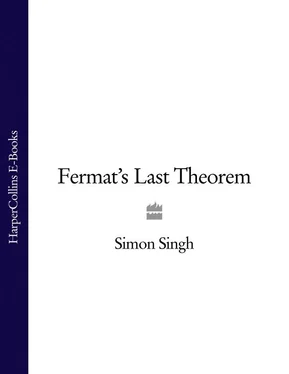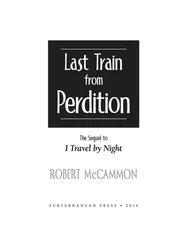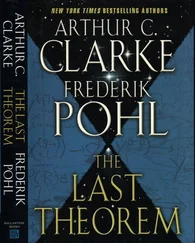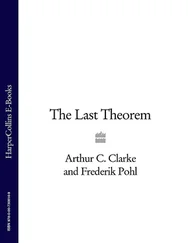Mersenne travelled throughout France and further afield, spreading news of the latest discoveries. In his travels he would make a point of meeting up with Pierre de Fermat and, indeed, seems to have been Fermat’s only regular contact with other mathematicians. Mersenne’s influence on this Prince of Amateurs must have been second only to the Arithmetica , a mathematical treatise handed down from the ancient Greeks which was Fermat’s constant companion. Even when he was unable to travel Mersenne would maintain his relationship with Fermat and others by writing prolifically. After Mersenne’s death his room was found stacked with letters written by seventy-eight different correspondents.
Despite the encouragement of Father Mersenne, Fermat steadfastly refused to reveal his proofs. Publication and recognition meant nothing to him and he was satisfied with the simple pleasure of being able to create new theorems undisturbed. However, the shy and retiring genius did have a mischievous streak, which, when combined with his secrecy, meant that when he did sometimes communicate with other mathematicians it was only to tease them. He would write letters stating his most recent theorem without providing the accompanying proof. Then he would challenge his contemporaries to find the proof. The fact that he would never reveal his own proofs caused a great deal of frustration. Rene Descartes called Fermat a ‘braggart’ and the Englishman John Wallis referred to him as ‘That damned Frenchman’. Unfortunately for the English, Fermat took particular pleasure in toying with his cousins across the Channel.
As well as having the satisfaction of annoying his colleagues, Fermat’s habit of stating a problem but hiding its solution did have more practical motivations. First, it meant that he did not have to waste time fully fleshing out his methods; instead he could rapidly proceed to his next conquest. Furthermore, he did not have to suffer jealous nit-picking. Once published, proofs would be examined and argued over by everyone and anyone who knew anything about the subject. When Blaise Pascal pressed him to publish some of his work, the recluse replied: ‘Whatever of my work is judged worthy of publication, I do not want my name to appear there.’ Fermat was the secretive genius who sacrificed fame in order not to be distracted by petty questions from his critics.
This exchange of letters with Pascal, the only occasion when Fermat discussed ideas with anyone but Mersenne, concerned the creation of an entirely new branch of mathematics – probability theory. The mathematical hermit was introduced to the subject by Pascal, and so, despite his desire for isolation, he felt obliged to maintain a dialogue. Together Fermat and Pascal would discover the first proofs and cast-iron certainties in probability theory, a subject which is inherently uncertain. Pascal’s interest in the subject had been sparked by a professional Parisian gambler, Antoine Gombaud, the Chevalier de Méré, who had posed a problem which concerned a game of chance called points. The game involves winning points on the roll of a dice, and whichever player is the first to earn a certain number of points is the winner and takes the prize money.
Gombaud had been involved in a game of points with a fellow-gambler when they were forced to abandon the game half-way through, owing to a pressing engagement. The problem then arose as to what to do with the prize money. The simple solution would have been to have given all the money to the competitor with the most points, but Gombaud asked Pascal if there was a fairer way to divide the money. Pascal was asked to calculate the probability of each player winning had the game continued and assuming that both players would have had an equal chance of winning subsequent points. The prize money could then be split according to these calculated probabilities.
Prior to the seventeenth century the laws of probability were defined by the intuition and experience of gamblers, but Pascal entered into an exchange of letters with Fermat with the aim of discovering the mathematical rules which more accurately describe the laws of chance. Three centuries later Bertrand Russell would comment on this apparent oxymoron: ‘How dare we speak of the laws of chance? Is not chance the antithesis of all law?’
The Frenchmen analysed Gombaud’s question and soon realised that it was a relatively trivial problem which could be solved by rigorously defining all the potential outcomes of the game and assigning an individual probability to each one. Both Pascal and Fermat were capable of independently solving Gombaud’s problem, but their collaboration speeded up the discovery of a solution and led them to a deeper exploration of other more subtle and sophisticated questions related to probability.
Probability problems are sometimes controversial because the mathematical answer, the true answer, is often contrary to what intuition might suggest. This failure of intuition is perhaps surprising because ‘survival of the fittest’ ought to provide a strong evolutionary pressure in favour of a brain naturally capable of analysing questions of probability. You can imagine our ancestors stalking a young deer, and weighing up whether or not to attack. What is the risk that a stag is nearby ready to defend its offspring and injure its assailant? On the other hand what is the chance that a better opportunity for a meal might arise if this one is judged too risky? A talent for analysing probability should be part of our genetic makeup and yet often our intuition misleads us.
One of the most counterintuitive probability problems concerns the likelihood of sharing birthdays. Imagine a football pitch with 23 people on it, the players and the referee. What is the probability that any two of those 23 people share the same birthday? With 23 people and 365 birthdays to chose from, it would seem highly unlikely that anybody would share the same birthday. If asked to put a figure on it most people would guess a probability of perhaps 10% at most. In fact, the actual answer is just over 50% – that is to say, on the balance of probability, it is more likely than not that two people on the pitch will share the same birthday.
The reason for this high probability is that what matters more than the number of people is the number of ways people can be paired. When we look for a shared birthday, we need to look at pairs of people not individuals. Whereas there are only 23 people on the pitch, there are 253 pairs of people. For example, the first person can be paired with any of the other 22 people giving 22 pairings to start with. Then, the second person can be paired with any of the remaining 21 people (we have already counted the second person paired with the first person so the number of possible pairings is reduced by one), giving an additional 21 pairings. Then, the third person can be paired with any of the remaining 20 people, giving an additional 20 pairings, and so on until we reach a total of 253 pairs.
The fact that the probability of a shared birthday within a group of 23 people is more than 50% seems intuitively wrong, and yet it is mathematically undeniable. Strange probabilities such as this are exactly what bookmakers and gamblers rely on in order to exploit the unwary. The next time you are at a party with more than 23 people you might want to make a wager that two people in the room will share a birthday. Please note that with a group of 23 people the probability is only slightly more than 50%, but the probability rapidly rises as the group increases in size. Hence, with a party of 30 people it is certainly worth betting that two of them will share the same birthday.
Fermat and Pascal founded the essential rules which govern all games of chance and which can be used by gamblers to define perfect playing and betting strategies. Furthermore, these laws of probability have found applications in a whole series of situations, ranging from speculating on the stock market to estimating the probability of a nuclear accident. Pascal was even convinced that he could use his theories to justify a belief in God. He stated that ‘the excitement that a gambler feels when making a bet is equal to the amount he might win multiplied by the probability of winning it’. He then argued that the possible prize of eternal happiness has an infinite value and that the probability of entering heaven by leading a virtuous life, no matter how small, is certainly finite. Therefore, according to Pascal’s definition, religion was a game of infinite excitement and one worth playing, because multiplying an infinite prize by a finite probability results in infinity.
Читать дальше












